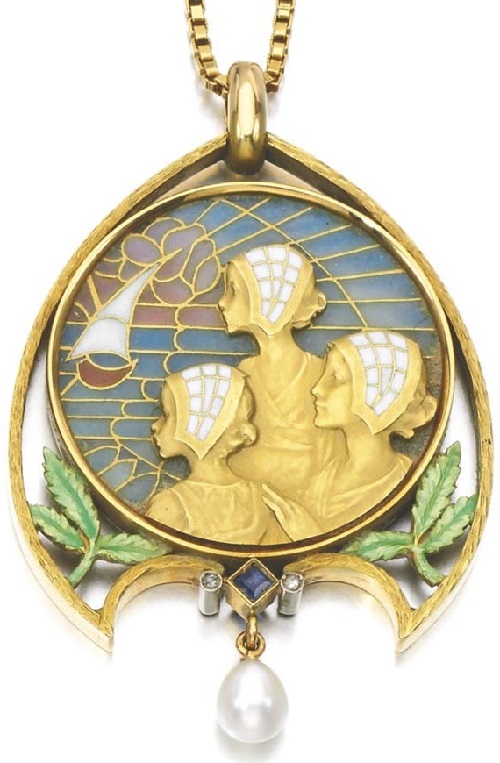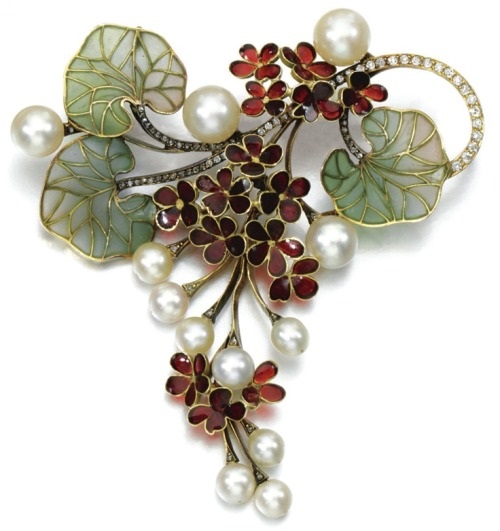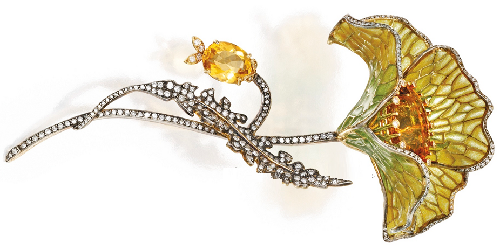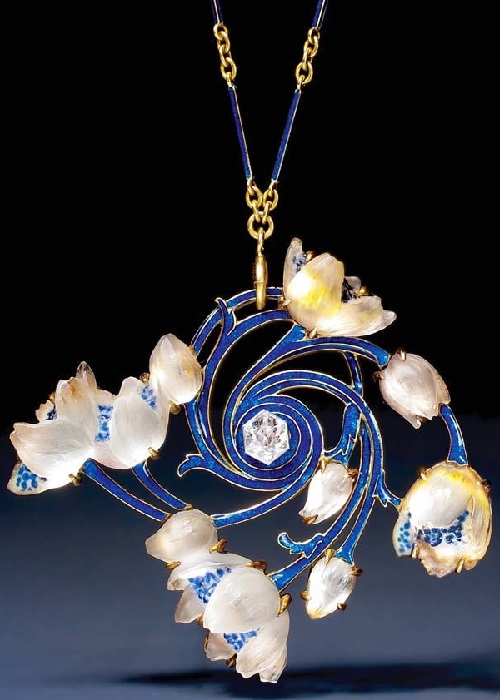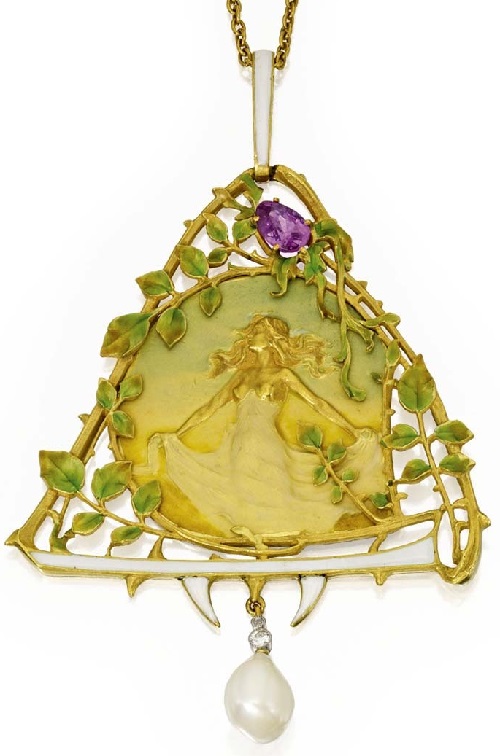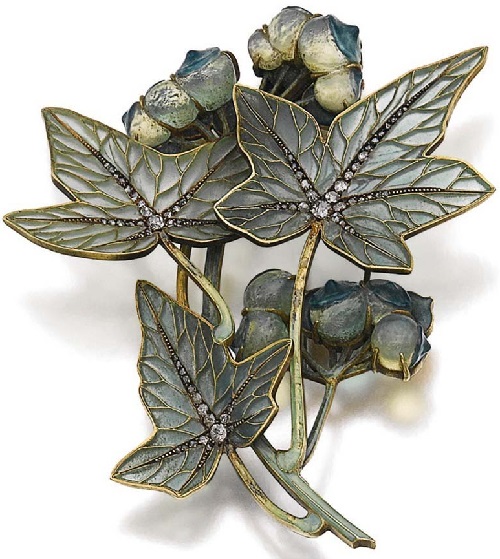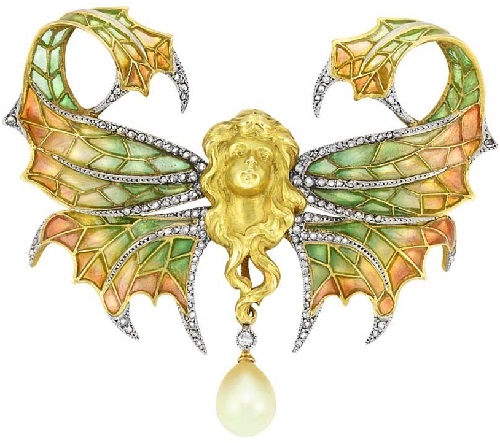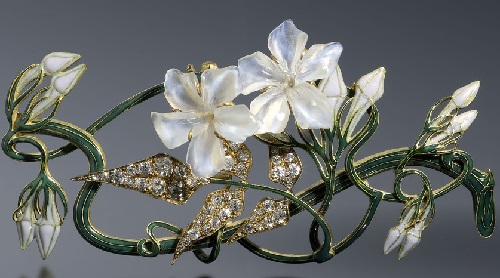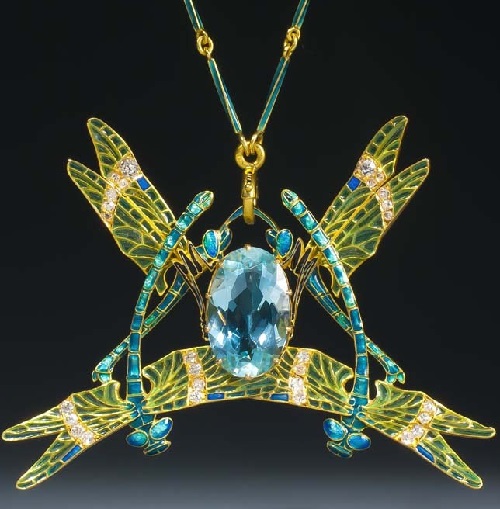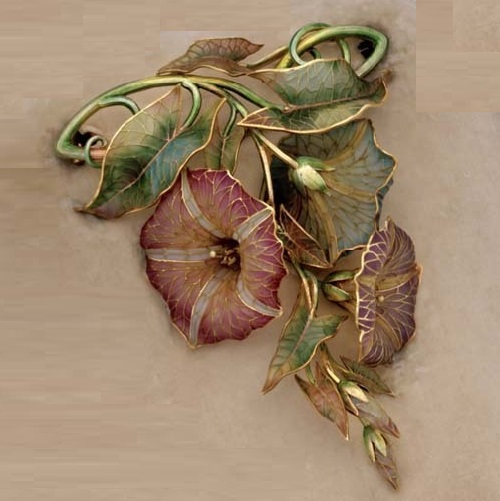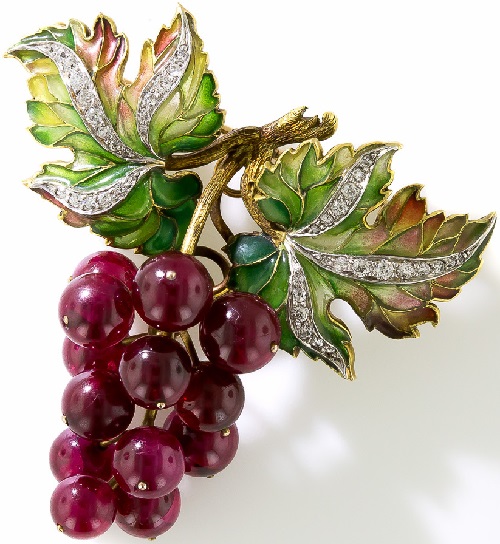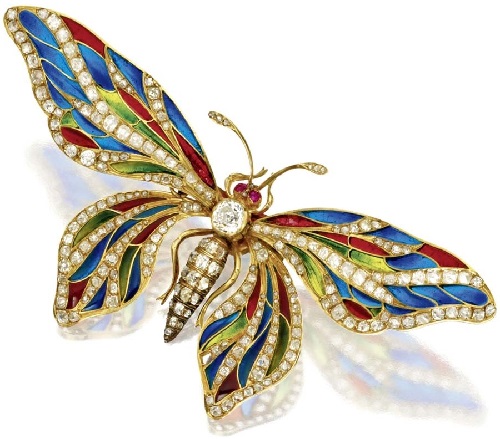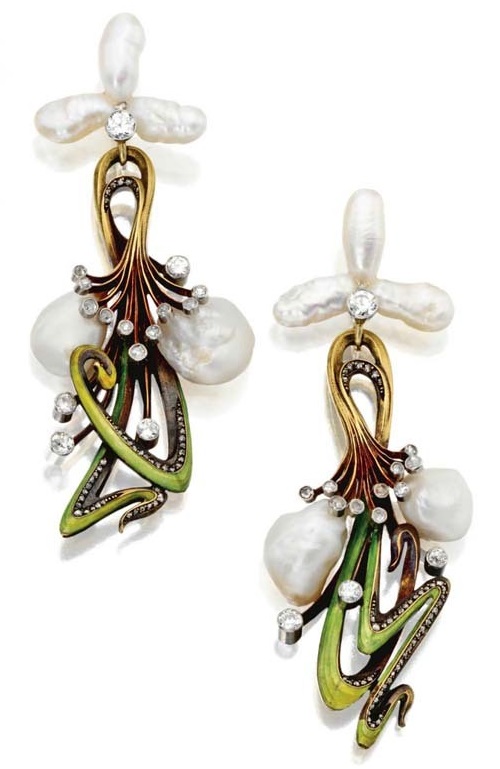Plique-a-jour enamel jewellery

18K Gold, Amethyst, enamel and diamond brooch, Gubelin (image from website sothebys.com). Plique-a-jour enamel jewellery
Plique-a-jour enamel jewellery
One of the most sophisticated and complex art of vitreous enamelling technique, originates in the Byzantine Empire of 6th century. Revived in the late 19th century by the movement of revivalist jewellery, this technique became especially popular in Russia. In particular, works by legendary jewelers, such as Pavel Ovchinikov, Ivan Khlebnikov, and some other masters working for Faberge are real masterpieces of plique-a-jour.
This filigree technique enables light to shine through the enamel like stained-glass. Traditionally, Russian masters predominately worked with tableware. Precious artistic tableware, decorative and applied art from the stained glass enamels always considered the top jewellery.
Kievan Russia (strong trading partner of Constantinople) adopted the technique of plique-a-jour alongside with other enamel techniques. In fact, owing Plique-à-jour tableware was the sign of aristocracy. Meanwhile, Russian masters significantly developed plique-a-jour technique. Thus, in addition to cells cut in precious metal they worked with cells made of silver wire. Unfortunately, the plique-à-jour technique of Kievan Russia was lost after the crushing Mongol invasion in the 13th century. Yet, some examples still preserved and now visitors to the Historical Museum in Moscow can enjoy them.
In fact, the modern masters rare use plique-a-jour technique in their work. First of all, because it is challenging technically. And second, mainly due to break in transferring of skills between generations of jewelers. However, some luxury houses, such as Tiffany in jewellery, Bulushoff in jewellery and tableware produce limited numbers of products in this technique. Also, in China and Iran craftsmen still work in the similar technique, known as shotai shippo.

